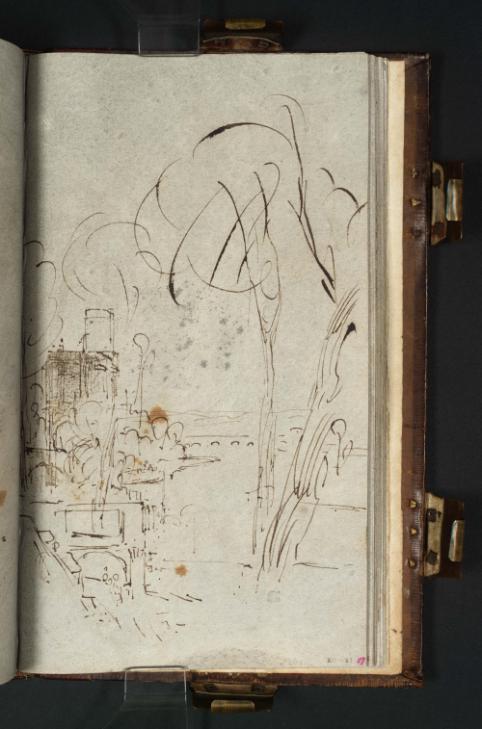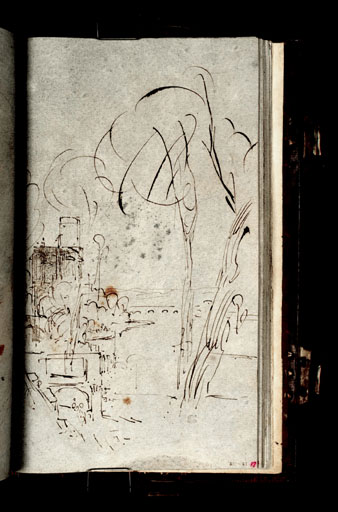Joseph Mallord William Turner Study for a Classical Landscape: Origin of 'Mercury and Herse' 1805
Image 1 of 2
Joseph Mallord William Turner,
Study for a Classical Landscape: Origin of 'Mercury and Herse'
1805
Joseph Mallord William Turner 1775–1851
Folio 57 Recto:
Study for a Classical Landscape: Origin of ‘Mercury and Herse’ 1805
D05581
Turner Bequest XC 57
Turner Bequest XC 57
Pen and ink on off-white wove paper, prepared with a grey wash, 258 x 150 mm
Inscribed by John Ruskin in red ink ‘57’ bottom right
Stamped in black ‘XC 57’ bottom right
Inscribed by John Ruskin in red ink ‘57’ bottom right
Stamped in black ‘XC 57’ bottom right
Accepted by the nation as part of the Turner Bequest 1856
References
1909
A.J. Finberg, A Complete Inventory of the Drawings of the Turner Bequest, London 1909, vol.I, p.236, XC 57, as ‘Study for “Mercury and Herse”’.
1984
Martin Butlin and Evelyn Joll, The Paintings of J.M.W. Turner, revised ed., New Haven and London 1984, p.81.
1993
David Hill, Turner on the Thames: River Journeys in the Year 1805, New Haven and London 1993, p.162.
This is one of a group of studies in this sketchbook which can be associated, with varying degrees of certainty, with Mercury and Herse exhibited at the Royal Academy in 1811 (on the London art market in 2005).1 The others are on the verso (D05582) and folios 58, 58 verso, 59 and 60 (D05583–D05585, D05586). Hill thinks that these, and certainly the present drawing, were ‘conceived without a fixed subject’, citing as evidence the various themes noted by Turner on the facing page, folio 56 verso (D05580), which include episodes in the biblical story of Jacob, Rachel and Laban and the Thames pastoral poetry of Alexander Pope. While their link with this drawing seems far from proven, Hill is surely correct in his assumption that these designs, like many in the sketchbook, were compositional templates that could be given subjects or narrative if and when Turner came to paint them.
Together with similar studies on folios 43 verso, 44 and 52 verso (D05558, D05559, D05573) these drawings show him evolving a grand upright classical composition with various architectural features and processing figures. Butlin and Joll, following Finberg, regard the present drawing as ‘almost certainly’ a study for Mercury and Herse and folio 60 as ‘probably another’ but are ‘much less certain’ about the others. Turner may have been prompted to choose this particular theme for his composition by the group of studies depicting episodes from Ovid’s Metamorphoses on foregoing pages of the sketchbook; see note to folio 54 (D05575). The story of Mercury and Herse is told in Book 1 of the Metamorphoses. In his picture, Turner showed Herse, daughter of the King of Athens, carrying offerings to the Acropolis in honour of Demeter. It was on this occasion that Mercury, messenger of the gods, fell in love with her.
David Blayney Brown
August 2007
How to cite
David Blayney Brown, ‘Study for a Classical Landscape: Origin of ‘Mercury and Herse’ 1805 by Joseph Mallord William Turner’, catalogue entry, August 2007, in David Blayney Brown (ed.), J.M.W. Turner: Sketchbooks, Drawings and Watercolours, Tate Research Publication, December 2012, https://www


